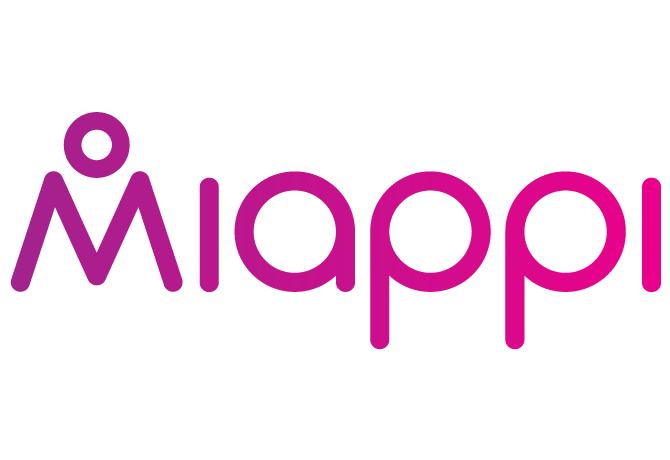Getting your start-up funded

We’ve been lucky – we have just landed some meaningful investment that has extended our runway into interesting territory. Just as the chill winds of economic slowdown seem to be blowing through the European investment community we’ve managed to complete our latest, and largest, round of investment to date. Nothing spectacular you understand (around $1m) but, maybe, just maybe the last round we’ll have to raise. And that’s a very big deal for us indeed.
I say we’ve been lucky but in truth luck hasn’t really played a part in where we are today. If anything I’d say we’d caught some unlucky breaks over the last few years. The fact that we’re still here can really be put down to one thing: persistence. Some might say ‘grit’ or even bloody mindedness (or just stupidity). Call it what you like but there it is. We’ve stuck to the plan and weathered the storm (storms) and we’re still going. We now have funding, a great team and growing revenues. What could possibly go wrong.
For us, this all started back in late 2012. We’d had an idea and built a MVP using our own money to bootstrap the developer costs. I’d spent the previous couple of years on another SaaS product that we’d bootstrapped entirely and I was determined that we shouldn’t do that again with Miappi. It was time to look for funding.
Through our own contacts (having a strong network is really important – nurture those names in your black book!) we quite quickly came across a new London-based accelerator programme called Collider. Along with 120 other start-ups we applied for it and, after several weeks of pitches and interviews, we got through to the final 10 companies who were to receive the investment.
We didn’t automatically jump at the chance to be part of Collider, far from it. It was very much a double-edged sword for us and it took a lot of debates to persuade ourselves that it was for the best. For starters they were asking for 12.5% of the company for not very much money. The deal was this: There was £100K available but that was a combo of debt and equity with the investment being made up from a consortium of brands involved in the accelerator programme. So, in fact we were looking at giving away 12.5% for just £50K…but wait, it gets worse! Of that £50K investment we had to give a significant portion back to Collider as their fee. You can see why we had second thoughts (and the rest) about getting involved.
So why did we get involved? Well, Collider had one major thing going for it and that was access to numerous big name (like really big) multi-nationals. The thought of privileged access to these mentors and, let’s face it, potential clients, was just enough to tip us over the edge. We accepted the place on Collider13, the inaugural year of the accelerator. Was that a smart move? On balance, probably, but that’s another story!
Alongside Collider we also secured a high net worth individual – close friends with one of my co-founders. (Okay, so that bit was quite lucky). He put in £100K under the UK government’s SEIS tax relief investment scheme. It was a no brainer for him. He believed in the product and in us as a team and, hey, as this was an SEIS investment he stood to get all his money back in the event the business didn’t go anywhere! For his £100K our Angel got a little over 10% of the newly formed Miappi Ltd.
So we’d already given away more than 20% of the company – in UK terms for a start-up that’s probably par for the course but any of our American cousins reading this might think we were a little generous. We now had investment but not a huge amount. Almost immediately – and just when we wanted to be 100% focused on building the business – we had to get right back on the funding merry-go-round. Small investments make for short runways so there’s really no option but to keep one eye open at all times for new investors.
About eight months after we accepted our position on Collider we were introduced to a new potential investor. This guy was starting a new fund and was backed by money from overseas investors. He liked the product and wanted to take a significant stake in the business. In fact, he wanted to invest £1m in Miappi and said he could complete by the end of February so we signed Heads of Terms. We were very excited to say the least. Finally, funding that was going to give us a much longer runway.
We stopped looking for other investors and started recruiting for more developers and other members of the team to help us market the product. The discussions progressed, he checked out on the references we took, things went back and forth between our respective lawyers (he was using big city lawyers – another tick in the box), money laundering checks were made, we went through technical due diligence and eventually, slightly later than he’d indicated, in March 2014, we signed the Investment Agreement, and then…nothing happened.
April came and went and then May. Just some ‘minor tax issues’ to resolve we were assured. May turned into June – still no money (lots of promises though!). Our runway was gone and we were now relying on the goodwill of our developers to keep things going. A couple of us dug into our savings and loaned the company some money just so the developers didn’t walk. Needless to say we’d hadn’t paid ourselves anything either.
Here’s the thing. At no time did the potential investor indicate that the money wasn’t coming. Every time we spoke to him he was just getting on a flight to see the fund backers or their trust or something else. Had he been more candid about things we would have cut and run long before and looked for other investment…we can’t be certain but we assume he knew that, but he needed to show deal-flow for his new VC and we were a deal and he didn’t want to let us walk away…so he kept stringing us along, week after week, month after month.
I mentioned persistence before. That’s certainly part of the story, a big part, but grit can get you only so far before the economic realities of the situation overtake you. If there’s no money left you can’t pay anyone and you all have to go home. Luckily for us, our ‘experience’ – I have to reluctantly admit I’m in my (early) 40’s – means we have more resources then we had in our 20’s. Some savings (plus wives and small children we can put out to work) meant we could take a bit more a financial beating than some younger founders might endure. So, we tightened our belts and paid out the last of the money to the development team (Steve).
July, August. Still nothing. Once we hit the summer we knew we had to make alternative plans. We needed another source of investment and quick. We were skint, had very little revenue and we were down to one developer. We went in search of more funding and after a lot of searching and meetings we were ‘lucky’ (actually persistent again) and found another contact (remember that black book?) who was now running a fund. This was at Downing Ventures, a VC with a track record this time and not just a pipedream – they became our first institutional investor.
We turned a corner with that first funding from Downing Ventures. Since then they have consistently backed us. Most recently they have corner-stoned the round that we’ve just completed.
So there you have it, a brief history of how to get a start-up funded. I’m not sure I would advise that exact same route for everyone but it’s certainly been an interesting journey so far. Will it all be plain sailing from here? Probably not but at least we have a fighting chance now…and plenty of war wounds to compare with our fellow start-ups!
Make the valuable visible. REQUEST A DEMO today to learn how to showcase amazing content which presents your brand at its best.



